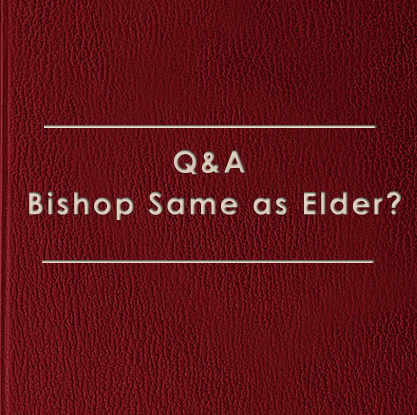Is Praying With A Sincere Heart, Real Intent, and Having Faith In Jesus A Valid Way of Knowing Whether or Not The Book of Mormon Is True?
The Book of Mormon supposedly gives the ultimate test on whether or not it came from God by exhorting the reader to pray to the Father with a sincere heart, real intent, and having faith in Christ, and it will be shown to him/her by the power of the Holy Spirit. This is located in Moroni 10:4,5, which states: “And when ye shall receive these things, I would exhort you that ye would ask God, the Eternal Father, in the name of Christ, if these things are not true; and if ye shall ask with a sincere heart, with real intent, having faith in Christ, he will manifest the truth of it unto you, by the power of the Holy Ghost. And by the power of the Holy Ghost ye may know the truth of all things.”
This is a false test for several reasons:
- First, “the Mormon doctrine of coming to faith is its complete reliance on emotion.” (Mormonism and Faith 2). How can one know for certain that those emotions came directly from the Holy Spirit? The Bible states that we are not to place our trust in ourselves, which would include our own feelings (Jeremiah 10:23; Proverbs 14:12). A person must not rely on their own personal, subjective inner feelings, but rather place their trust and obedience in religious truth that is actually objective, verifiable by evidence, and therefore attainable and knowable. For many years, Jacob thought his son, Joseph, was dead. He was deceived by his other sons into believing that his son was dead when, in fact, the Bible shows that Joseph was living down in Egypt (Genesis 39-50). Saul of Tarsus thought he was doing the right thing. He had lived in all good conscience (Acts 23:1), but the evidence came to him when Jesus appeared to Saul personally and he found out that he was wrong. God did not assign a role to the Holy Spirit that He would provide some direct, mystical experience. However, God has always offered evidence, which is proof of the divine message which leads one to concretely believe in Jesus. A great example of this type of reasoning is found in the first recorded sermon in the book of Acts. Peter appeals to four types of evidence so that his hearers might receive and obey the gospel of Christ: (1) the miracles of Jesus (Acts 2:22); (2) prophecy (Acts 2:25-28), (3) the resurrection of Jesus, backed by the credible testimony of eyewitnesses (Acts 2:27-32), and (4) the events of the day (Acts 2:33). Peter provided the evidence on which the crowd could use logical reasoning to come to know the truth and then place their faith in Jesus by repenting and be baptized for the remission of their sins (Acts 2:38). The Book of Mormon works in a complete, opposite direction – that though the things sought out by Mormons are contrary to all the evidence, they must still must pray about it. That is definitely taking a blind leap into the darkness of error!
- There is a second reason that is given in Mormonism and Faith that states: “The Mormon answers by proposing a vicious circle. One knows that this ‘burning in the bosom’ is from the Holy Spirit, he says, because it came from reading the Book of Mormon. It must be God, because it results from God’s things. However, even elementary logic will quickly recognize this as a vicious circle; that is, the first premises presume the conclusion thus make the system logically untenable. In other words, the Mormon argues that the warm fuzzies are proof that the Book of Mormon is true. When asked how one can tell that the warm fuzzies are the Holy Spirit and not something else, he can only respond that one can tell because it is a response to the Book of Mormon, which is true (2).”
- A third reason as to why this test is not valid is because there are those who have now come out of the Latter-Day Saint denomination who no longer believe that the Book of Mormon is true and no longer believe Joseph Smith to be a true prophet. What about their previous testimony? They asserted over and over again that their testimony is true, but now they no longer believe in that testimony. Why the great change? Could it not be that these people found verifiable evidence that proved that the Book of Mormon was not true?
In conclusion, a person can see that the Latter-Day Saint religion is built on a shaky foundation of emotion and feelings and not upon strong, reasonable evidence. In contract to the nature of the Latter-Day Saint’s “faith”, the Bible-believing Christian has a stable foundation to set his/her faith upon because it is built upon rock-solid evidence that can be supported rationally.
Related Posts

Is A “Bishop” The Same Work As An “Elder”?

Does The Latter-Day Saint Standard Works and the Qu’ran Violate The Parameters of Revelation?
About The Author
Nathan Franson
Nathan Franson grew up in Salt Lake City, Utah where he spent his first 20 years in the Church of Jesus Christ of Latter Day Saints (Mormons) before studying his way out of it. Click Here To Read Full Bio
